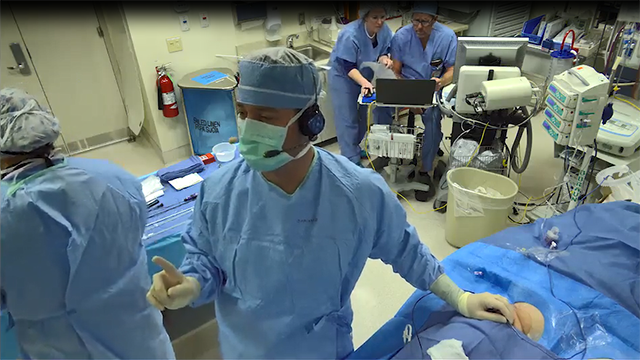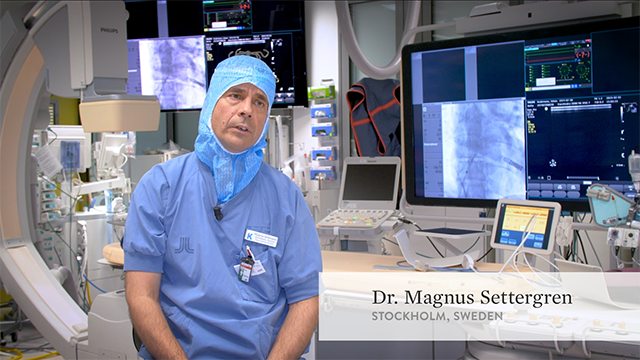

Enable Durable Hemostasis with SMCR | Enhance the Patient Experience | Empower Higher EP Efficiency | FAQ
Perclose™ ProStyle™ Suture-Mediated Closure for EP Ablation Procedures
| ENABLE immediate and durable hemostasis1 with >96% freedom from major access site related complications at 30 days2,3,4,5 | ENHANCE your patient's comfort and satisfaction over manual compression1,5,17 | EMPOWER higher EP lab efficiency with ambulation in as early as 2 hours1,2,4* and same day discharge2,3,4,5** |
The Perclose™ ProStyle™ Suture-Mediated Closure and Repair (SMCR) System has the broadest indication for venous and arterial sheaths† and a proven track record with over 20 million closures.7
Whether you use RF, Cryo, or Pulse Field Ablations, the comprehensive Perclose™ Systems allow you to confidently adopt innovations with larger sheath sizes.1,§
Learn more about how you can finish your procedure with confidence.
Enable Immediate and Durable Hemostasis Through Suture-Mediated Repair
Suture-Mediated Repair with Perclose™ ProStyle™
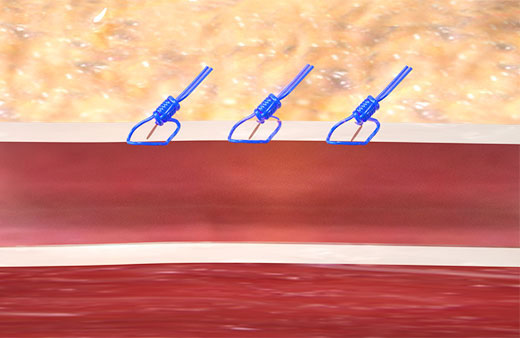

Before: More Closure-Related Interventions Mean More Staff Time
Prior to adopting Perclose™ ProStyle™ SMCR System, EPs completing an atrial fibrillation ablation or other procedures may find that patients require:
- Multiple venous sheaths and access sites8
- Uninterrupted anticoagulation: activated clotting time (ACT) ≥ 300 seconds9,10
- Manual compression at groin access site for up to 30 minutes9
- Protamine sulfate to reverse the effects of heparin11
- Figure-of-eight (FO8) to maintain hemostasis9
- Prolonged immobilization/bedrest of 4-12 hours to prevent bleeding and complications9
- A Foley catheter12
- Discharge 249-7210 hours after the procedure
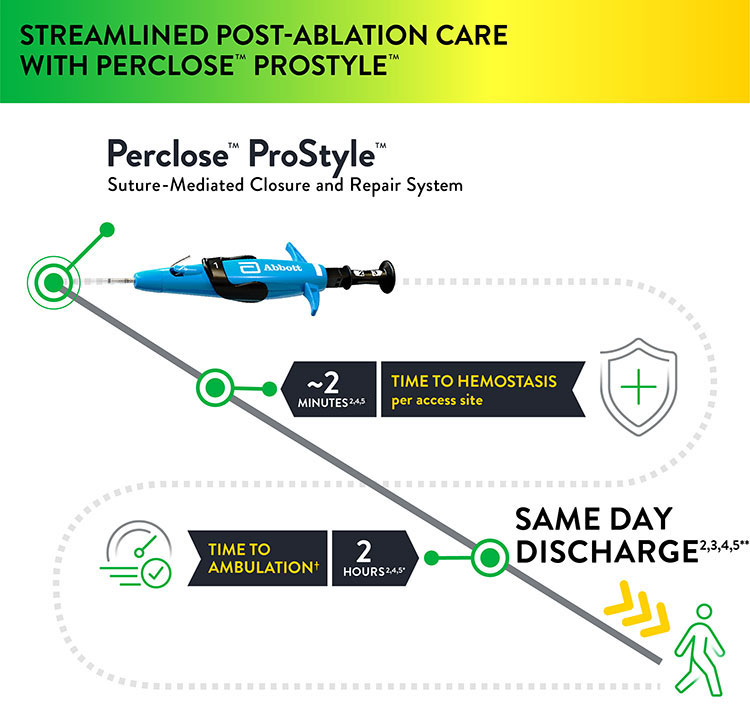
Using Perclose™ ProStyle™ Device: Improved EP Lab Workflow, Enhanced Patient Experience
The Perclose™ ProStyle™ closure device transforms an otherwise lengthy patient recovery to a shorter recovery time, which in turn leads to a positive patient experience:
- Time to hemostasis (TTH) on avg is ~2 minutes per access site2,4,5
- Patient may sit up immediately; no lay-flat restrictions1
- Patients can ambulate after 2 hours1
- Patient may be eligible for same-day discharge2,3,4,5**
The STYLE-AF (randomized two-arm study, n=125) compared Perclose™ Systems to Figure-of-Eight sutures after PFA, and Cryo ablations for Afib. The Perclose™ Study group demonstrated a significantly reduced hemostasis, ambulation, and discharge eligibility times and increased patient satisfaction with their bedrest time relative to the Fo8 control group.26

Empower Higher EP Lab Efficiency, Lower Avoidable Costs, and Improve Patient Experience
1,000+ patients have demonstrated the safety and effectiveness of Perclose™ ProStyle™ in closing multiple CFV access sites across multiple real-world investigator sponsored studies (ISS).2,3,4,5,24,25,26
The use of Perclose™ ProStyle™ Suture-Mediated Closure and Repair System can help:

SOURCE: S. Verma. Adopting a Strategy of Early Ambulation and Same-Day Discharge for Atrial Fibrillation Ablation Cases - EP Lab Digest - May 2019.
Suture-Mediated Repair with Perclose™ ProStyle™
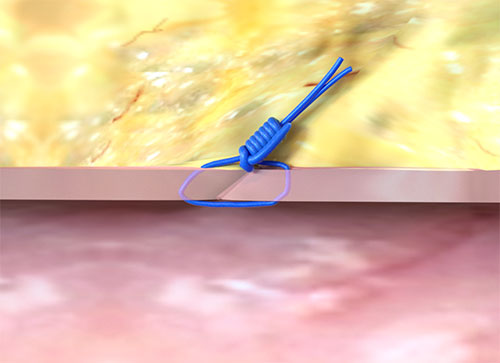
Primary Intention Healing


Case Recordings
Each of these brief videos offers details of multiple device deployment using Perclose™ closure devices.

Fun Facts
For easy reference, view our infographic to understand how Perclose™ Family of VCDs can help deliver more efficient quality care.

Frequently Asked Questions
Can Perclose™ ProStyle™ be used for vascular closure after Pulsed Field Ablation (PFA) for AFib?
Yes, Perclose™ ProStyle™ can be used in conjunction with a variety of AFib ablation techniques, including Pulsed Field Ablation (PFA) for venous sheaths up to 24F ID (29 OD).1†
At the time of this publication, only Perclose™ Devices can close after all PFA systems including Farapulse‡ (13F Inner Diameter (ID), 16.8F Outer Diameter (OD)). §,1,†
Why would I want to use a vessel closure device (VCD) in a vein?
Using a VCD has several advantages given the following factors during EP procedures such as AF ablations:
- Physicians often have multiple access sites to manage, even some involving large caliber venous sheaths.
- Patients often receive full-dose peri-procedural anticoagulation, and this can make complete hemostasis a challenging and lengthy process, requiring prolonged immobilization.
- The typical EP lab post-procedure process requires the patient to remain immobilized for prolonged periods of time, which is a source of patient discomfort.
All of these issues are mitigated when using the Perclose™ ProStyle™ closure device.
Is Same-Day Discharge after AF ablations safe?
Yes, Same-Day Discharge has been shown to be safe, and it is being used to reduce the total cost of care and to enhance the patient experience. The use of vessel closure devices makes it possible for hospitals to implement Same-Day Discharge.13,17,18
What makes Perclose™ ProStyle™ SMCR System different from other vascular closure devices?
With the Perclose™ ProStyle™ device you can achieve and confirm complete hemostasis on the table with a suture-mediated repair of the access site. Other advantages of the Perclose ProGlide™ SMC System include:
- The broadest indication* for use in both common femoral veins and arteries
- No ACT-level requirements, so reversal of heparin is not required in order to achieve immediate and durable hemostasis
For what range of sheath sizes and devices can the Perclose™ ProStyle™ SMCR System be used?
The Perclose ProStyle™ closure device is indicated for use with:
- Venous sheaths 5-24F1 (Max. OD 29F19 / 0.378 inches / 9.59 mm)
- Arterial sheaths 5-21F1 (Max OD 26F19 / 0.340 inches / 8.62 mm)
Does the Perclose™ ProStyle™ device come in different sizes?
No, there is only one Perclose™ ProStyle™ SMCR System. Multiple Perclose™ ProStyle™ devices can be used, if necessary, for large-bore vascular closure.
How quickly can a patient be mobilized, ambulated, and discharged when using the Perclose™ ProStyle™ closure device?
Because this device achieves immediate and durable hemostasis, patients can be mobilized and ambulated after approximately two hours (at the physician's discretion). Some facilities have successfully implemented a Same-Day Discharge strategy when using the Perclose™ ProStyle™ SMCR System.
How does the Perclose™ ProStyle™ SMCR System achieve immediate and durable hemostasis?
It achieves hemostasis by approximating the edges of the vessel wall with a surgical suture, allowing primary intention healing to begin. Primary intention healing minimizes scarring and allows for immediate reaccess if needed.
What kind of training is available to begin using the Perclose™ ProStyle™ SMCR System?
Contact your local Abbott representative for a training opportunity.
What is the "Pre-Close" Technique?
The "Pre-Close" Technique involves the Perclose™ ProStyle™ suture being placed around the access site before the index procedure, and it is required before using sheath sizes > 8F.
Visit the official Perclose™ ProStyle™ website for more information on the features, deployment, clinical data, Perclose™ ProStyle™ videos, and ordering information related to Perclose™ ProStyle™ SMCR System.
References
*As compared to Angio-Seal,‡ ExoSeal,‡ FemoSeal,‡ InClosure,‡ MANTA,‡ Mynx,‡ PerQseal,‡ Vascade,‡ Velox CD,‡ X-Seal‡. Data on file at Abbott.
- Abbott Perclose ProGlide Suture-Mediated Closure (SMC) System Instructions for Use.
- Sekhar A, et al. Femoral arterial closure using ProGlide™ is more efficacious and cost-effective when ambulating early following cardiac catheterization. Int J Cardiol Heart Vasc. 2016;13:6-13. doi: 10.1016/j.ijcha.2016.09.002.
- 11 million repairs based on Nov. 2021 Finance Report. 27 years based on Nov. 8, 1993 [Perclose] patent was filed for percutaneous suture vascular closure device. The Perclose portfolio includes all percutaneous suture devices. Data on file at Abbott.
- Gupta S. I Just Need Some Closure: Getting Past Using Manual Compression After Ablation. HRS 2018.
- Lakshmanadoss U, et al. Figure-of-eight suture for venous hemostasis in fully anticoagulated patients after atrial fibrillation catheter ablation. Indian Pacing Electrophysiol J. 2017;17:134-139. doi: 10.1016/j.ipej.2017.02.003
- Okada M, et al. Efficacy and safety of figure-of-eight suture for hemostasis after RFCA for AF. Circ J. 2018;82:956-964. doi: 10.1253/circj.CJ-17-1213.
- Ghannam M, et al. Protamine to expedite vascular hemostasis after catheter ablation of atrial fibrillation: A randomized controlled trial. Heart Rhythm. 2018;15(11):1642-1647. doi: 10.1016/j.hrthm.2018.06.045.
- Mohanty S, et al. Venous access-site closure with vascular closure device vs. manual compression in patients undergoing catheter ablation or left atrial appendage occlusion under uninterrupted anticoagulation. EP Europace. 2019;21:1048-1054. doi.org/10.1093/europace/euz004.
- Calkins H, et al. 2017 HRS/EHRA/ECAS/APHRS/SOLAECE expert consensus statement on catheter and surgical ablation of atrial fibrillation. Heart Rhythm. 2017;14(10):e275-e444. https://dx.doi.org/10.1016/j.hrthm.2017.05.012.
- Kar, S., et al, The Use of Perclose ProGlide Suture-Mediated Closure (SMC) Device for Venous Access-Site Closure Up to 24F Sheaths. CRT 2018.
- Mahadaven VS, et al. Pre-closure of femoral venous access sites used for large-sized sheath insertion with the Perclose device in adults undergoing cardiac intervention. Heart. 2008;94:571-572. doi.org/10.1136/hrt.2006.095935.
- Sairaku A, et al. Rapid hemostasis at the femoral venous access site using a novel hemostatic pad containing kaolin after atrial fibrillation ablation. J Interv Card Electrophysiol. 2011;31:157-164.
- Verma S. Adopting a strategy of early ambulation and same-day discharge for atrial fibrillation ablation cases. EP Lab Digest. 2019;19(5).
- Mercandetti M. Wound Healing and Repair. Medscape. Accessed February 26, 2020. https://emedicine.medscape.com/article/1298129-overview
- Bhatt DL, et al. Successful “pre-closure" of 7Fr and 8Fr femoral arteriotomies with a 6Fr suture-based device (the Multicenter Interventional Closer Registry). Am J Cardiol. 2002;89:777-779.
- Applies to arterial access.
- Bartoletti S, Mann M, Gupta A, et al. Same‐day discharge in selected patients undergoing atrial fibrillation ablation. Pacing Clin Electrophysiol. 2019;42:1448-1455.
- Deyell M, Macle L, Khairy P, et al. The efficacy of a same-day discharge protocol after atrial fibrillation ablation. Canadian J Cardiol. 2018;34:(10 suppl):S84. doi:https://doi.org/10.1016/j.cjca.2018.07.281.
- Tests performed by and data on file at Abbott.
- Verma, S., et al, Feasibility and Safety of Same Day Discharge for Patients Undergoing Atrial Fibrillation (AF) Ablation in a Community Hospital Setting. HRS 2020 Science Online, May 2020.
